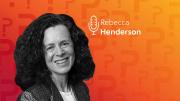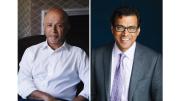In November, 1997, a curious report emerged from physicists at the California Institute of Technology, who claimed that certain subatomic particles could move from one place to another without physically traversing the intervening space. "It sounded to most people like the transporters in Star Trek--you know, 'Beam me up, Scotty!'" says Brendan Dooley, associate professor of history and social studies. Newspapers almost immediately began extrapolating futuristic modes of transportation from these findings.
Closer scrutiny, however, revealed that the research actually concerned a transformation in the properties of matter that occurs at short distances. "Even to use the word 'transported' is an exaggeration," says Dooley, who asks, "Why did they present the findings in this way? Partly it's the demand of the marketplace for new information, which can motivate the imaginations of researchers. You could call this a scientific 'invention'--something that is really more or less false."
Dooley, a cultural historian specializing in the Baroque period, nonetheless believes that such scientific obfuscations, fictions, falsehoods, and hoaxes produce benefits as well as dangers. In his forthcoming book, Science and the Marketplace, he explores their causes and effects. On the downside, consider the number of false and misleading articles published in medical journals. Dooley describes one study of 235 biomedical journal articles for which retractions were later published and indexed on Medline, an on-line bibliography. Despite these retractions, 2,034 subsequent articles cited the erroneous reports--and a study of 293 of those citations showed that fewer than 5 percent mentioned the retractions. "Hoaxes and falsehoods get through, and affect other research," says Dooley. "They continue to be cited and to form scientific debate, often for a considerable length of time."
Yet this is actually business-as-usual in science, a normal part of the overall enterprise that even contributes to its progress. "The very act of disproving falsehoods may refine techniques of research and the critical use of research materials, as well as methods of scientific practice," says Dooley. "This process can improve scientific methods of detecting untruth."
Falsehoods occur for many reasons. Intellectual entrepreneurship--which Dooley calls "selling your results or making your ideas attractive to a market"--has long been an important motive for scholars. In other cases, he says, "We may get an exaggerated result that flatters the self-love of a patron--or the political priorities of a funding agency--or that corresponds to dominant preconceptions people have about their society or culture."
Consider Dutch microscopy pioneer Anton van Leeuwenhoek (1632-1723), who published many articles about the care needed in making observations with a microscope--defects in the lens, or dirt in one's eye or on a slide, for example, could all yield false results. Yet at one point in his career, when he looked at spermatozoa under a microscope, Leeuwenhoek thought he saw homunculi ("little men")--tiny human beings with little arms and legs--wiggling around. "He concluded that the male is the fundamental agent of reproduction, that the baby is fully formed in the sperm," says Dooley. "There was tremendous pressure from the marketplace to justify the dominant position of males in society. No one is immune to their culture."
Dooley's intellectual quest involves "trying to see the other side of the history of the disciplines--not just the triumphant story that portrays a uniform progress of ideas, resulting in the disciplines we have today." Still, he distances himself from the revisionist "science studies" movement, which, he says, argues that "since all science is formed by society, we must make sure it doesn't perpetuate politically undesirable myths." Some of these scholars go even further, and propose that science should consciously promote politically "progressive" ideas. In this context Dooley mentions Lysenkoism, a fallacious theory of biological change (postulating that acquired characteristics can be inherited) that was consistent with dialectical materialism and so became orthodoxy in the Soviet Union. "The science-studies people think we should create more Lysenkos," he says. "Instead, we need to be both more critical of, and more respectful of, science."
The core issue involves the way we characterize science. "Is science a body of discovered truths--or a method for finding out how nature works?" Dooley asks, linking this question to current debates over evolution and creationism. "There are points in the history of science, and instances in the behavior of scientists, where beliefs enter in," he says. "People get married to their theories, which become certainties, facts. When presented as beliefs--a set of cut-and-dried propositions that are true and unanswerable--science plays right into the hands of the creationists. Belief is the Achilles heel of science. But if science is taught as a method of discovery, you're less likely to forget how ideas emerge in the real world--that they are always in flux, always changing. Fiction is a part of science, and we should be aware of that."
~Craig Lambert





